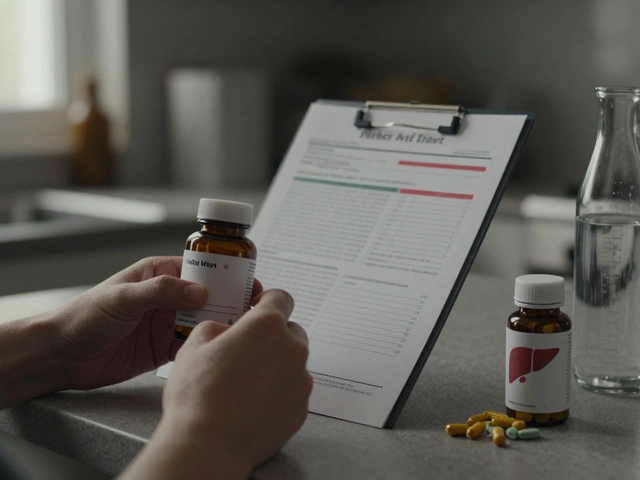- Home
- Orthopedics
- Worst Day After Knee Replacement: What to Expect and How to Tackle It

Worst Day After Knee Replacement: What to Expect and How to Tackle It
It’s no secret: knee replacement recovery isn’t a walk in the park, especially during those first few days. Most folks remember day two or three as the roughest. The anesthesia has worn off, the pain meds don’t seem to keep up, and swelling moves in like an unwanted roommate.
If you’re lying in bed wondering if this is normal, you’re not alone. Seriously, surgeons and nurses hear about 'the worst day' from almost every patient. Your knee feels huge, it’s hot, and even small movements can fire up the pain. Some people even start doubting the whole decision to get surgery in the first place.
- Why Day Two or Three Hits Hard
- Pain, Swelling, and Your Mindset
- What You Can Actually Do About It
- When to Worry (and When Not To)
Why Day Two or Three Hits Hard
You might be shocked how much worst day after knee replacement searches pop up every week. There’s a reason for that—tons of people notice the pain really kicks in around day two or three, and it’s not just in their heads. Here’s why.
During surgery, your body gets a ton of help from anesthesia and heavy-duty pain meds. The first 24 hours feel weird, but often not as rough as you’d expect. But as the drugs leave your system, reality sets in: the knee’s sore, nerves are waking up, and swelling ramps up big-time because your body’s busy healing and protecting the new joint.
Pain peaks around this time for most people. It’s not just the incision site—tissues inside your joint are inflamed, and moving the knee (which you’re encouraged to do early on) hurts. Everyone’s different, but hospitals track this stuff:
| Day After Surgery | Common Pain Level (1-10) | Notable Symptoms |
|---|---|---|
| Day 1 | 4–6 | Less swelling, numbing still present |
| Day 2 | 6–8 | Pain sharpens, swelling increases |
| Day 3 | 7–8 | Stiffness, heaviness, trouble sleeping |
By day three, the physical therapist is usually pushing you to bend and walk more, which is frustrating but necessary. Your knee feels tight, maybe even bruised, and swelling makes it hard to trust the joint. Sleep's a joke, which doesn’t help your mood.
This rough patch tends to pass in a few days as your body calms down, but it’s hands down the toughest stretch for most people who’ve gone through knee replacement.
Pain, Swelling, and Your Mindset
This part is where things can get pretty intense. After a knee replacement, pain and swelling are no joke. Most people hit their peak on the second or third day. The swelling comes from your body’s natural response to the trauma of surgery—it’s actually your body trying to heal. But that doesn’t make it feel any better when your leg looks like it doubled in size and every little movement hurts.
Doctors say it’s common for pain levels to spike right after the hospital pain meds start wearing off. There’s a reason for it. Your body is adjusting, and pain signals get louder when you start to move around more. Ice packs, elevating your leg, and sticking to your painkiller schedule can help, but don’t expect an overnight fix.
Let’s talk about mindset for a minute. Recovery from a knee replacement isn’t just about your body healing. It’s also a mental battle. Feeling frustrated, grumpy, or even a little depressed these first few days is normal. Some people are caught off guard by how down they feel, especially when they can’t move around like they used to. Instead of powering through alone, it actually helps to talk about it—tell a family member or even your nurse how you’re feeling.
Here are some quick, real-world tips to get your head in a better space as your body heals:
- Keep track of progress, even tiny wins, like being able to flex your knee a little more each day.
- Stick to the pain management plan, even if you think you can tough it out—nobody gets bonus points for suffering.
- Let yourself rest without feeling guilty. Your main job right now is to heal.
- Ask questions—if you’re not sure about your pain or swelling, reach out to your medical team.
Getting through this stretch is rough, but knowing what’s happening and having a few practical strategies can make it easier. Just remember, this is the worst day after knee replacement for a reason. It gets better from here.

What You Can Actually Do About It
This is the part everyone wants to know—how to make that worst day after knee replacement a little less miserable. There’s no magic button, but there are real ways to get ahead of the pain and swelling.
First, don’t play catch-up with pain pills. Staying ahead of pain is a basic truth in early recovery. If your doctor or nurse gave you a schedule, stick to it like glue. Waiting until you start to hurt makes it much harder for the meds to work. If you have any questions about the amount or type, check in with your care team—they want you comfortable enough to move.
Ice is your best friend right now. Cold packs help dial down swelling and numb the area. The trick? Don’t slap the ice directly on your skin: wrap it up in a towel, and aim for 20 minutes on, then 20 or 30 minutes off. Swapping between your knee and your favorite distraction (TV, music, anything) helps those intervals go faster.
Keep your leg elevated higher than your heart when you can. Gravity helps the fluid drain out of your knee, which means less swelling and less throbbing. Pile up some pillows, but keep your knee straight, not bent—this matters for recovery later, too.
Don’t brush off those simple ankle pumps and gentle wiggles, even if you feel like skipping them. Moving your toes, flexing your ankle—this stuff keeps your blood flowing and cuts down the risk for blood clots. Little movements matter, and it’s not about doing more, but doing something every hour you’re awake.
- Take pain meds on a regular, scheduled basis as prescribed.
- Ice your knee with a wrapped ice pack for 20-minute sessions.
- Prop up your leg on pillows above heart level when sitting or lying down.
- Do basic ankle pumps and wiggle your toes to keep the blood moving.
- Drink water and eat protein-rich foods—healing eats up both.
If you hit a wall, remember you're not stuck like this forever. Most people say even though the worst day is rough, it does pass. If your pain feels out of control, you can’t move your foot, or if you see worrisome redness or oozing, call your doctor ASAP. Otherwise, focus on these small steps—they really add up.
When to Worry (and When Not To)
Okay, you’re sore, and your knee is twice its normal size. What’s normal and what deserves a call to the doc? Here’s the scoop. Some pain, swelling, and stiffness are part of almost every recovery. But certain signs mean it’s more than just a rough worst day after knee replacement.
- If your knee gets redder and keeps getting hotter, that’s not normal after the first few days. Heat and redness should fade, not get worse.
- Fever higher than 101°F (38.3°C) isn’t just "normal healing"—that’s a reason to reach out, especially if it comes with chills.
- Sudden, sharp pain that’s worse than anything you’ve felt since surgery could mean a problem, especially if you also hear a "pop."
- Calf swelling that keeps growing or looks uneven compared to the other leg could be a blood clot (DVT). Watch for pain in your calf, especially when you flex your foot.
- If fluids leaking from your wound are thick, yellow, or smelly, that’s a sign of infection—not just regular post-surgery drainage.
Now, here’s what not to stress over: Bruising that creeps down to your ankle, numb patches on your skin, and the knee changing colors like a chameleon are super common. Even clicking or popping when you move, as long as there’s no wild pain, is just your knee settling in.
If in doubt, call your surgeon’s office. Most teams expect some worried calls—they’d rather check a dozen false alarms than miss one real issue. Point is, listen to your body but don’t let every ache freak you out. Most people get through this worst patch without anything serious happening.

Arnav Singh
I am a health expert with a focus on medicine-related topics in India. My work involves researching and writing articles that aim to inform and educate readers about health and wellness practices. I enjoy exploring the intersections of traditional and modern medicine and how they impact healthcare in the Indian context. Writing for various health magazines and platforms allows me to share my insights with a wider audience.
About
Medical Resource Center India is a comprehensive online platform dedicated to providing reliable health information and medical resources in India. Explore a wide range of articles, tips, and advice on medicine, healthcare services, and wellness. Stay informed about the latest developments in Indian medicine and access valuable insights into maintaining a healthy lifestyle. Discover expert guidance and health solutions tailored for every Indian citizen. Your go-to destination for authoritative medical knowledge in India.






